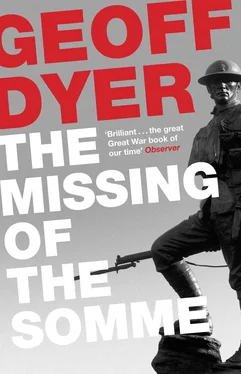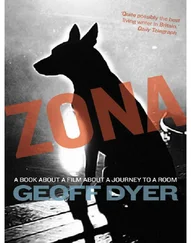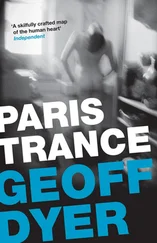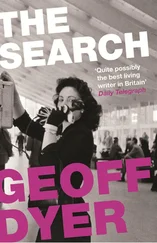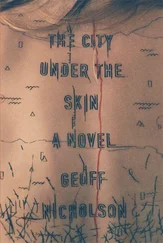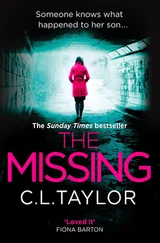Geoff Dyer - The Missing of the Somme
Здесь есть возможность читать онлайн «Geoff Dyer - The Missing of the Somme» весь текст электронной книги совершенно бесплатно (целиком полную версию без сокращений). В некоторых случаях можно слушать аудио, скачать через торрент в формате fb2 и присутствует краткое содержание. Год выпуска: 2012, Издательство: Canongate Books, Жанр: Биографии и Мемуары, Публицистика, Критика, на английском языке. Описание произведения, (предисловие) а так же отзывы посетителей доступны на портале библиотеки ЛибКат.
- Название:The Missing of the Somme
- Автор:
- Издательство:Canongate Books
- Жанр:
- Год:2012
- ISBN:нет данных
- Рейтинг книги:3 / 5. Голосов: 1
-
Избранное:Добавить в избранное
- Отзывы:
-
Ваша оценка:
- 60
- 1
- 2
- 3
- 4
- 5
The Missing of the Somme: краткое содержание, описание и аннотация
Предлагаем к чтению аннотацию, описание, краткое содержание или предисловие (зависит от того, что написал сам автор книги «The Missing of the Somme»). Если вы не нашли необходимую информацию о книге — напишите в комментариях, мы постараемся отыскать её.
The Missing of the Somme — читать онлайн бесплатно полную книгу (весь текст) целиком
Ниже представлен текст книги, разбитый по страницам. Система сохранения места последней прочитанной страницы, позволяет с удобством читать онлайн бесплатно книгу «The Missing of the Somme», без необходимости каждый раз заново искать на чём Вы остановились. Поставьте закладку, и сможете в любой момент перейти на страницу, на которой закончили чтение.
Интервал:
Закладка:
And if, as Gilbert Adair has suggested, Auden’s poems of the thirties are somehow ‘in black and white’, then Owen’s, by extension, are in sepia monochrome. It is impossible to colour them in; like photographs, they too are colour-resistant.
Having seen all things red,
Their eyes are rid
Of the hurt of the colour of blood for ever.
In Blunden too ‘vermilion’, ‘damask’, the ‘pinks and whites’ of roses and ‘golden lights’ of daisies are out of place:
. . the choice of colour
Is scarcely right; this red should have been duller.
The world had had the colour bombed out of it. Sepia, the colour of mud, emerged as the dominant tone of the war. Battle rendered the landscape sepia. ‘The year itself looks sepia and soiled,’ writes Timothy Findley of 1915, ‘muddied like its pictures.’
This is why — to return to an earlier theme — the photographs of men queuing up to enlist seem wounded by the experience that is still to come: they are tinted by the trenches, by Flanders mud. The recruits of 1914 have the look of ghosts. They are queuing up to be slaughtered: they are already dead.
This characteristic sensation — Larkin’s ‘MCMXIV’ begins with a photo of ‘long uneven lines’ of men queuing up to enlist — is articulated by Owen in ‘The Send-Off’, a poem describing recruits about to entrain for France:
Down the close darkening lanes they sang their way
To the siding-shed. .
The landscape they leave in these first two lines is a premonition of the one ‘a few’ may return to, ‘up half-known roads’, in the last. At the moment of departure they are already marching through the landscape of mourning. The summer of 1914 is shadowed by the dusk of drawn blinds. Before boarding the train they have joined the ranks of the dead:
Their breasts were stuck all white with wreath and spray
As men’s are, dead.
But Owen’s poem does not, so to speak, stop there. The train pulls out into a future that seems, to us, to stretch away from the Great War and extend to the memory of another, more recent holocaust:
Then, unmoved, signals nodded, and a lamp
Winked to the guard.
So secretly, like wrongs hushed-up, they went.
They were not ours:
We never heard to which front these were sent.
‘Agony stares from each grey face.’
Relative to the scale of the slaughter, very few pictures of the British dead survived the Great War. 9This was due principally to restrictions on reporting. Only official photographers were allowed at the front; ordinary press photographers were almost totally excluded from the battle areas; front-line soldiers themselves were discouraged from carrying cameras (or keeping diaries).
Any photographs that did get taken were subject to strict censorship so that no images prejudicial to the war effort found their way into print. After the war the archives were vetted so that the number of photographs of British dead was whittled down still further 10. Like all the most efficient restrictions, these successive measures worked consensually rather than simply repressively. Reflecting, establishing and perpetuating a broad agreement between state, photographers and public as to what fell within the limits of acceptable taste, they defined that which they claimed to be defined by.
The pictures that have been preserved show isolated or small groups of dead soldiers. They give no sense of death on the scale recorded by a German Field Marshal on the Eastern Front:
In the account book of the Great War, the page recording the Russian losses has been ripped out. The figures are unknown. Five million, or eight? We ourselves know not. All we do know is that, at times, fighting the Russians, we had to remove the piles of enemy bodies from before our trenches, so as to get a clear field of fire against new waves of assault.
On the Western Front, months after the Battle of the Somme had ended, John Masefield wrote how the dead still ‘lay three or four deep and the bluebottles made their faces black’.
Photographs of the missing are themselves missing.
Typically, pictures from the front line show not the dead, but people who have witnessed death. Like this well-known photograph (here) of a soldier suffering from battle fatigue. What does this face express? It is difficult to say because any word of explanation has to be qualified by its opposite: there is the most intense appeal for compassion — and an utter indifference to our response; there is reproach without accusation; a longing for justice and an indifference to whether it comes about.
We stare at the picture like Isabelle Rimbaud — sister of the poet — who, in August 1914, took water to a group of exhausted soldiers coming out of battle. ‘Where do they come from?’ she wondered. ‘What have they seen? We should greatly like to know, but they say nothing.’
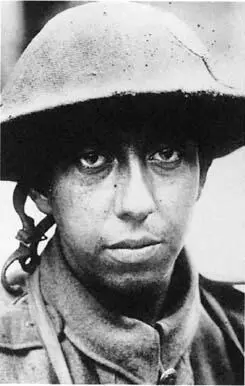
What has he seen?
This picture, too, is mute. It is immune to our gaze. We are looking into the eyes of a man who has seen the untellable.
In a letter written on the last day of 1917 Owen wrote to his mother ‘of the very strange look’ he had noticed on soldiers’ faces at Etaples. It was, he said,
an incomprehensible look, which a man will never see in England. . It was not despair or terror, it was more terrible than terror, for it was a blindfold look, without expression, like a dead rabbit’s.
It will never be painted, and no actor will ever seize it. And to describe it, I think I must go back and be with them.
Looking across the Channel before he did exactly that, Owen quoted a favourite passage from Rabindranath Tagore: ‘When I go from hence, let this be my parting word, that what I have seen is unsurpassable.’ Owen’s poems are overwhelmingly concerned with this, the fact of having seen:
. . As under a green sea, I saw him drowning
In all my dreams, before my helpless sight,
He plunges at me, guttering, choking, drowning.
He had come to France to help his men, he said, by leading them and ‘indirectly by watching their sufferings that I may speak of them as well as a pleader can’. In so doing he affirms, repeatedly, his reliability as a witness:
I saw their bitten backs curve, loop, and straighten,
I watched those agonies curl, lift, and flatten.
He focuses frequently — as in the passage from ‘Insensibility’ quoted above — on ‘the blunt and lashless eyes’ of men he has seen, men who have been blinded by what they have seen:
O Love, your eyes lose lure
When I behold eyes blinded in my stead!
‘O sir, my eyes — I’m blind — I’m blind, I’m blind!’
Coaxing, I held a flame against his lids
And said if he could see the least blurred light
He was not blind; in time he’d get all right.
‘I can’t,’ he sobbed. Eyeballs, huge-bulged like squids’,
Watch my dreams still. .
The anger in his poems always comes from this: from the fact of having witnessed what civilians at home could never conceive of seeing. This reaches its most intense expression in the transitional passage in ‘Dulce et Decorum Est’:
If in some smothering dreams you too could pace
Behind the wagon that we flung him in,
And watch the white eyes writhing in his face. .
Owen, the best-known poet of the First World War, wrote that he was ‘not concerned with Poetry’. Robert Capa, the best-known photographer of the Second, declared that he was ‘not interested in taking pretty pictures’. During the Spanish Civil War he took the most famous war photograph of all time, which showed — or purported to — the precise moment of a Republican soldier’s death in action. In his photographs of the Second World War we come across the dead almost casually, in houses and streets. A photograph from December 1944 shows a frozen winter scene with bare trees, cattle and huts in the background. A GI advances across the photo towards a body lying in the middle of the field. Some way off, beyond the margins of the frame, in the next photograph, there will be another body. Through Capa’s photos, in other words, we follow a trail of bodies. This trail leads, ultimately, to the photos of mass death at the core of our century: bodies piled up in concentration camps. Capa, personally, had no intention of photographing the concentration camps, because they ‘were swarming with photographers, and every new picture of horror served only to diminish the total effect’.
Читать дальшеИнтервал:
Закладка:
Похожие книги на «The Missing of the Somme»
Представляем Вашему вниманию похожие книги на «The Missing of the Somme» списком для выбора. Мы отобрали схожую по названию и смыслу литературу в надежде предоставить читателям больше вариантов отыскать новые, интересные, ещё непрочитанные произведения.
Обсуждение, отзывы о книге «The Missing of the Somme» и просто собственные мнения читателей. Оставьте ваши комментарии, напишите, что Вы думаете о произведении, его смысле или главных героях. Укажите что конкретно понравилось, а что нет, и почему Вы так считаете.
